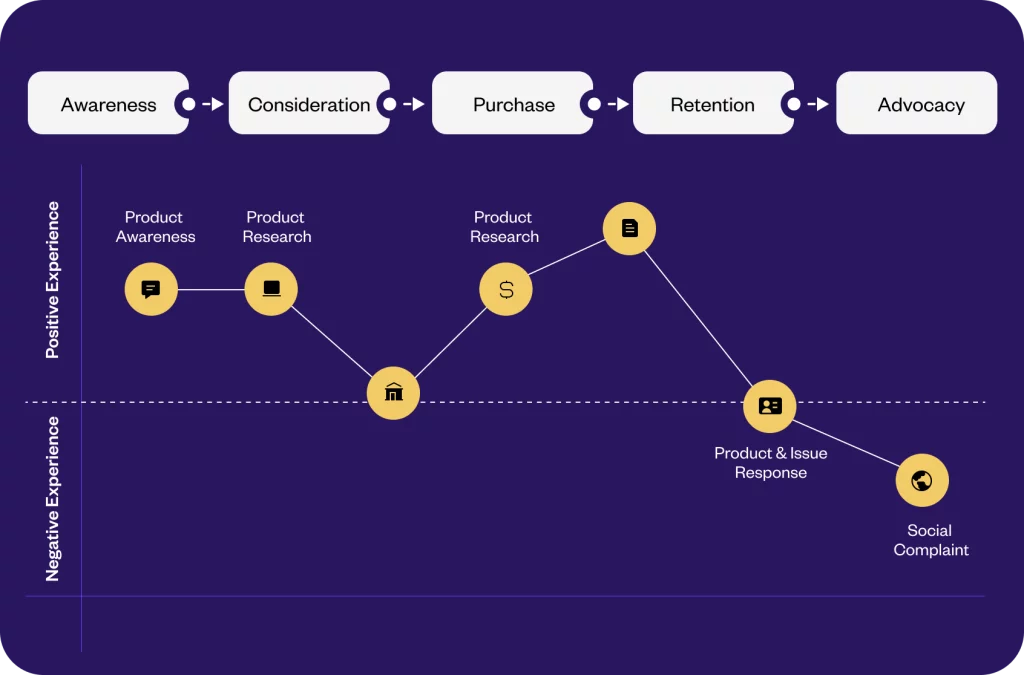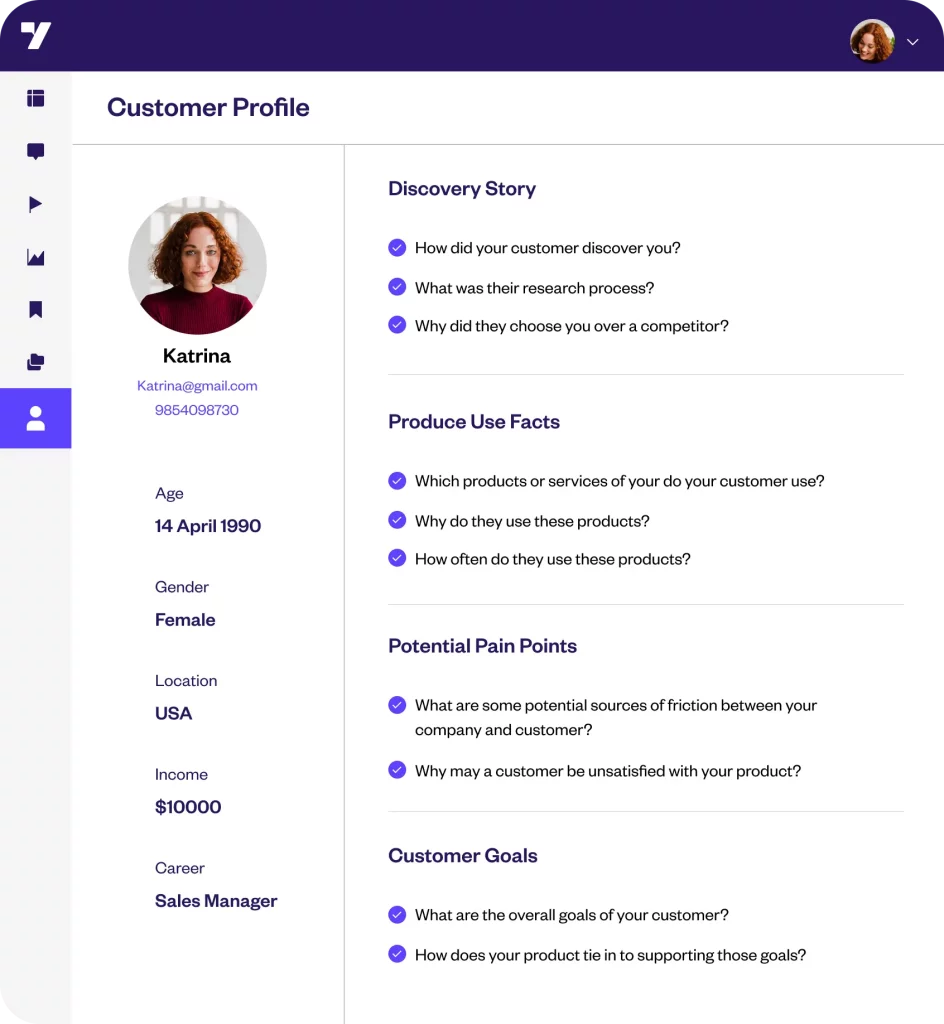Imagine you need a new smartphone. Like any other consumer in today’s digital-first era, you browse through online stores to find the best deals. But do you stop at just finding the ones with the cheapest price? The answer is most likely a resounding NO! You’d probably compare the features of various phones within your budget, and read through reviews on not just the phone’s features, but also the post-sale service, and more. A significant section of buyers would take it a step further, and visit a physical store to experience the actual product in person, before buying it online at the lowest price.
Here’s the truth: Attracting and retaining customers today is a high-stakes game, and there’s no one secret trick that works wonders. Today, customers care about the entire experience, Every interaction and touchpoint – whether digital or physical – matters, and successful businesses are the ones that offer seamless and hassle-free services to their customers.
Related must read: Customer experience vs. customer service
That’s where Customer Experience Management (CXM) comes into play. It’s all about creating an environment where customers feel valued and enjoy a smooth and delightful journey as they engage with a brand. Read on to learn more.
What is customer experience management?
Customer experience management (CXM) is the discipline of understanding customers and deploying strategic plans that enable cross-functional efforts and customer-centric culture to improve satisfaction, loyalty, and advocacy.
CXM is about building a customer-centric approach to business and making the user experience flawless and delightful, whether it’s through brand awareness, products, processes, or strategically deployed tech tools. The CXM journey begins from the moment a consumer discovers a brand and continues through various touchpoints along the way. It could be something as simple as a post on your social media feed, an Instagram story shared by an influencer, the initial purchase, or the post-purchase experience, every interaction leaves an impression. Even seemingly insignificant touchpoints contribute to building a relationship that ultimately shapes the customer’s perception.
What’s the difference between CRM and CXM?
CRM (Customer Relationship Management) and CXM (Customer Experience Management) are both approaches focused on managing customer interactions and improving business-customer relationships, but they are quite distinct in the value they bring to businesses.
CRM primarily focuses on managing customer data and interactions to enhance sales, marketing, and customer service processes.
On the other hand, CXM goes beyond data and involves the holistic management of all customer touchpoints and interactions across various channels and stages of the customer journey.
| Criteria | Customer Relationship Management (CRM) | Customer Experience Management (CXM) |
|---|---|---|
| Focus | Customer Relationship Management primarily focuses on managing customer data and relationships. It aims to improve internal business processes, sales, marketing, and customer service operations. | Customer Experience Management is primarily focused on delivering exceptional customer experiences throughout the entire customer journey. It aims to understand and meet customer needs, preferences, and expectations, ultimately enhancing customer satisfaction and loyalty. |
| Objective | The primary objective of CRM is to optimize business efficiency, improve sales performance, and enhance customer relationship management. It focuses on managing customer data, interactions, and leads to drive sales revenue and improve customer service. | The main objective of CXM is to create personalized, seamless, and delightful experiences for customers at every touchpoint. It aims to foster emotional connections, increase customer loyalty, and drive customer advocacy. |
| Scope | CRM primarily focuses on internal business processes and customer data management. It includes activities such as lead management, sales pipeline tracking, customer support ticketing, and contact management. | CXM encompasses all customer touchpoints and stages of the customer journey, including pre-purchase, purchase, and post-purchase interactions. It takes a holistic approach to managing and improving the overall customer experience. |
| Key components | Key components of CRM include managing customer data, tracking customer interactions, automating sales processes, managing leads and opportunities, and improving customer service operations. | Key components of CXM include understanding customer needs and preferences, collecting customer feedback, mapping customer journeys, and personalizing interactions to create exceptional experiences. |
| Key metrics | Key metrics used in CRM include sales revenue, conversion rates, customer retention rates, and customer lifetime value (CLV), which focus on measuring sales performance and customer relationship management. | Key metrics used to measure CXM success include Net Promoter Score (NPS), Customer Satisfaction (CSAT), Customer Effort Score (CES), and other feedback indicators that assess the overall customer experience and satisfaction. |
| Tools & technology | CRM utilizes CRM software systems, sales automation tools, ticketing systems, and customer data management platforms to effectively manage customer data, automate sales processes, and enhance customer relationship management. | CXM relies on various tools and technologies such as customer feedback management platforms, journey mapping software, personalization engines, conversational AI and analytics tools to understand customer preferences and deliver personalized experiences. |
Why is customer experience management important?

In today’s fast-evolving business world, Customer Experience Management (CXM) holds immense significance. It’s not just about selling products or services; it’s about creating remarkable moments and tailored interactions for customers. It’s about creating genuine connections and memorable moments. By putting customers at the heart of your business and consistently delivering exceptional experiences, you pave the way for long-term success and growth.
Let’s explore how Customer Experience Management can make a significant difference in your business.
- Making customers happy: CXM ensures that customers have a delightful journey with your brand. By truly understanding their needs and desires, you can exceed their expectations, leaving them satisfied and eager to return.
- Building lasting connections: When you prioritize CXM, you’re fostering strong bonds with your customers. By showing them genuine care, actively listening to their feedback, and providing personalized experiences, you earn their trust and loyalty.
- Standing out from the crowd: In a crowded marketplace, CXM is your secret weapon. By going the extra mile to create exceptional experiences, you differentiate yourself from competitors and become the go-to choice for customers.
- Driving growth: Satisfied customers are more likely to become repeat buyers and brand advocates. By prioritizing CXM, you not only retain existing customers but also attract new ones, fueling your business growth.
- Retaining customers: Customer retention is key to long-term success. By delivering consistently outstanding experiences, you reduce customer churn and create a loyal customer base that supports your business through thick and thin.
- Learning from customers: CXM allows you to gather valuable insights from customer interactions. By listening to their feedback, analyzing their preferences, and understanding their behaviors, you can continuously improve your offerings and stay ahead of the curve.
- Gaining a competitive edge: By giving CXM the utmost priority, you secure a notable edge over rivals. Through crafting unforgettable experiences and fostering emotional bonds, you establish a distinct market position that competitors find challenging to imitate.
What does a customer experience management strategy entail?
A customer experience management (CXM) strategy encompasses a set of intentional actions and approaches aimed at delivering exceptional experiences to customers at every touchpoint.
Here are the 10 key components typically included in a comprehensive CXM strategy. to help businesses create differentiated and memorable experiences that drive customer satisfaction, loyalty, and business success.
- Customer understanding: Gain deep insights into customer needs, preferences, and expectations through various methods such as surveys, feedback collection, and customer journey mapping. Understand their pain points, motivations, and desired outcomes.
- Customer journey mapping: Identify and map out the entire customer journey, from initial awareness to post-purchase support. Visualize each touchpoint and interaction to identify areas of improvement and opportunities for enhancing the customer experience.

- Personalization: Tailor interactions and offerings to meet individual customer preferences. Leverage customer data to deliver personalized experiences, such as personalized recommendations, targeted marketing messages, and customized support.
- Seamless omnichannel experience: Ensure consistency and continuity across multiple channels (such as website, mobile app, social media, and physical stores) to provide a seamless and cohesive experience. Enable customers to switch between channels effortlessly without losing context.
- Employee engagement: Engage and empower employees to deliver exceptional customer experiences. Provide training, tools, and resources to enable employees to understand and fulfill customer needs. Foster a customer-centric culture that prioritizes service excellence.
- Continuous improvement: Regularly collect and analyze customer feedback to identify areas for improvement. Use metrics such as Net Promoter Score (NPS), Customer Satisfaction (CSAT), and Customer Effort Score (CES) to measure customer sentiment and gauge the effectiveness of CXM initiatives.
- Proactive issue resolution: Anticipate and address customer issues and concerns before they become major problems. Empower customer service teams with the authority and tools to resolve issues promptly and effectively.
- Consistent brand experience: Align the customer experience with the brand’s values, promises, and identity. Ensure that the experience reflects the brand’s personality and resonates with the target audience.
- Technology enablement: Leverage customer experience management tools, analytics platforms, and automation solutions to streamline processes, gather insights, and personalize interactions at scale. Implement chatbots, AI, and self-service options to enhance customer convenience.
- Ongoing measurement and monitoring: Continuously monitor key CX metrics and track progress towards CXM goals. Regularly assess the impact of CXM initiatives and make data-driven adjustments to improve the customer experience.
Customer experience management best practices
By adopting these CXM best practices, businesses can create a customer-centric culture, deliver personalized experiences, and build strong relationships with customers, ultimately driving customer satisfaction, loyalty, and business growth.
1. Create and maintain customer profiles
Building and managing customer profiles is a fundamental aspect of gaining insights into your customers’ preferences and behaviors. It plays a vital role in delivering exceptional customer experiences. By creating detailed customer profiles, organizations can develop a comprehensive understanding of each individual. It is important to include attributes that accurately describe the customers, starting with basic information like demographics and transactional data. This enables businesses to categorize customers effectively and tailor their interactions to meet their specific needs.

2. Personalize your services
Customization plays a vital role in creating exceptional customer experiences. Research consistently shows that a significant number of respondents value personalization when making purchasing decisions. It allows products and services to become more effective on an individual level. In the realm of customer experience management, personalization is the key ingredient that makes customers feel special by receiving tailored offerings. This in turn helps foster loyalty as customers believe that the brand goes the extra mile for their satisfaction.
3. Time the campaigns correctly
Tailoring offers to individual customers and timing can have a remarkable impact on enhancing the customer experience. Consider the scenario of offering discounts on new denim. While discounts are appealing at any time, offering the same discount just before a customer’s birthday or providing a personalized offer around their anniversary can significantly elevate their experience.
Similarly, when it comes to jewelry shopping, customers anticipate special prices during festive seasons. However, going the extra mile by offering a special deal on their personal milestones creates the ultimate “moment of truth.” Imagine surprising customers with flowers or a thoughtful care package delivered to their registered address on their special occasion, without expecting a purchase. Such gestures transcend a good experience and transform it into something truly delightful.
Yellow.ai’s dynamic cross-channel campaigns

4. Automate data collection
With data gathered from multiple streams and historical purchases, it is possible to accurately predict what customer cycle they are in before sending the right message. Deep data collected with the help of AI and machine learning-powered tools are much more powerful than what you can gather from conventional methods.
AI-powered CX analytics tools not only gather customer data but also analyze it in real time to help you get a detailed understanding of your customer’s intent and sentiments and track their positive or negative sentimental trends to get deeper insights.
What are the questions to ask when evaluating customer experience management software?
When evaluating customer experience management software, it’s important to ask the following questions to ensure you choose the right solution for your business:
- Does the software provide comprehensive customer data collection and analysis capabilities?
- Can the software integrate with your existing customer data systems and platforms?
- What features does the software offer to track and measure customer satisfaction and loyalty metrics?
- Does the software provide tools for customer journey mapping and visualization?
- Can the software segment and personalize customer interactions and experiences?
- Does the software offer real-time customer feedback and survey capabilities?
- What automation and workflow capabilities does the software provide to streamline customer experience management processes?
- Does the software offer omnichannel capabilities to deliver consistent experiences across multiple touchpoints?
Why is Yellow.ai one of the best customer experience management solutions?
There are several customer experience management solutions available in the market, and the best choice for your business will depend on your specific needs and requirements.
Yellow.ai offers a cutting-edge customer experience management solution that empowers businesses to deliver exceptional experiences at every touchpoint. With Yellow.ai’s conversational AI platform, you can elevate your customer interactions and drive customer satisfaction to new heights. Key features include:
- Intelligent chatbots: Deploy AI-powered chatbots that engage customers in natural and meaningful conversations, providing instant support and personalized assistance.
- DynamicNLPTM: Our proprietary NLP, powered by zero-shot learning, is an industry-first innovation that eliminates the need for NLP training. This groundbreaking technology enables businesses to go live within minutes, while maintaining 97% right out of the box.
- Omnichannel support: Deliver consistent experiences across various channels, including websites, mobile apps, messaging platforms, voice assistants, and more, ensuring seamless interactions for your customers.
- Personalization capabilities: Leverage advanced personalization techniques to tailor interactions and recommendations based on individual customer preferences, driving engagement and loyalty.
- Power of generative AI: Achieve personalized campaigns across channels, cut operational costs by 60%, and generate high-quality leads for improved conversion rates.
- Real-time analytics: Gain valuable insights into customer behavior, preferences, and pain points with Yellow.ai’s analytics dashboard, enabling data-driven decision-making and continuous improvement.
- Automation and integration: Automate repetitive tasks and integrate with existing systems and databases to streamline processes and provide a unified view of the customer across the organization.
- Proactive engagement: Proactively reach out to customers with relevant offers, updates, and recommendations, enhancing their experience and driving increased engagement.
- Sentiment analysis: Understand customer sentiments and emotions through AI-powered sentiment analysis, enabling you to address concerns, identify opportunities, and enhance customer satisfaction.
FAQs
What role does customer feedback play in customer experience management?
Customer feedback plays a vital role in customer experience management as it brings the human element into the equation. It provides valuable insights into how customers feel, what they desire, and what can be done to enhance their experience. By actively listening to customer feedback, businesses can understand their needs and expectations on a personal level. This empowers businesses to make improvements, address pain points, and create meaningful connections with customers.
What are the 7 customer experience principles?
While there are various customer experience principles, here are seven commonly recognized ones:
- Customer-centricity: Placing the customer at the core of all business decisions and activities.
- Personalization: Tailoring experiences to meet individual customer needs, preferences, and expectations.
- Proactive anticipation: Identifying and addressing customer needs before they even arise.
- Consistency: Ensuring a consistent and seamless experience across all customer touchpoints and channels.
- Empathy: Demonstrating genuine care and understanding towards customers’ emotions, concerns, and perspectives.
- Ease and convenience: Making interactions and processes effortless and convenient for customers.
- Continuous improvement: Regularly seeking feedback, analyzing data, and striving for ongoing improvement in all aspects of the customer experience.
What are the 3 C’s of customer experience?
The 3 C’s of customer experience are as follows:
- Customer: This refers to placing the customer at the center of all business decisions and actions. It involves understanding their needs, preferences, and expectations to deliver personalized experiences that cater to their specific requirements.
- Consistency: Consistency emphasizes the importance of delivering a consistent experience across all customer touchpoints and channels. Customers expect a seamless and cohesive experience, regardless of whether they interact with a company in-person, online, or through various communication channels.
- Culture: Culture represents the internal environment and values of a company. It involves fostering a customer-centric culture within the organization, where all employees are aligned towards providing exceptional customer experiences. A customer-focused culture encourages employees to go above and beyond to meet customer needs and consistently deliver high-quality service.
What is the customer experience formula?
Customer Experience = Perception – Expectation
The customer experience formula measures how customers perceive their actual experience compared to their expectations. By subtracting expectations from perception, it reveals if the experience met or exceeded expectations. The goal is to consistently surpass customer expectations and deliver exceptional experiences.
What are the six measures of customer experience?
When evaluating customer experience, consider key metrics that reflect overall satisfaction and loyalty. These include – customer satisfaction, Net Promoter Score (NPS), customer effort score, customer loyalty and retention, customer lifetime value, and customer advocacy. By tracking and analyzing these metrics, you can gain insights into the success of your customer experience initiatives and continually improve your services.
Unlock business success through customer experience management (CXM)
In a world that values personalization more than ever, customer experience management (CXM) plays a crucial role in the success of businesses. It’s no longer satisfactory for brands to simply offer good products and services; customers expect more. By leveraging technologies like big data analytics, brands can create exceptional customer experiences that keep customers loyal and satisfied. If you’re ready to enhance your CXM strategy, our team of experts is here to help.
Request a demo today with our experts at Yellow.ai, and together we can implement the best CXM strategy for your business using the power of conversational AI.






















